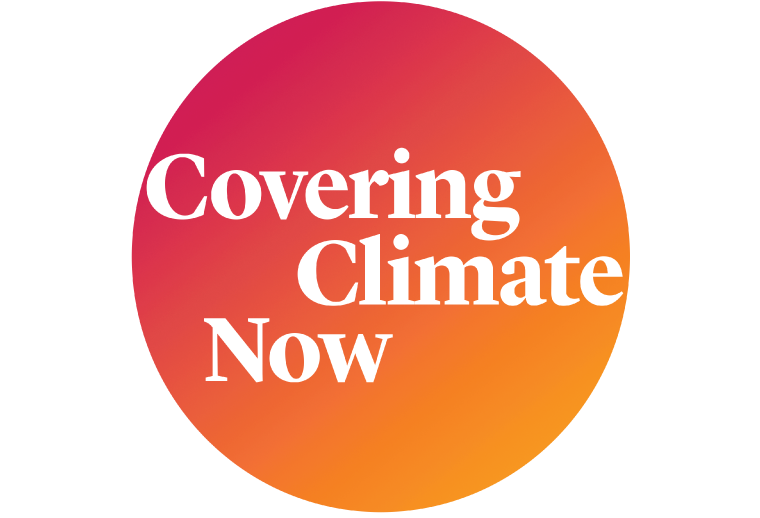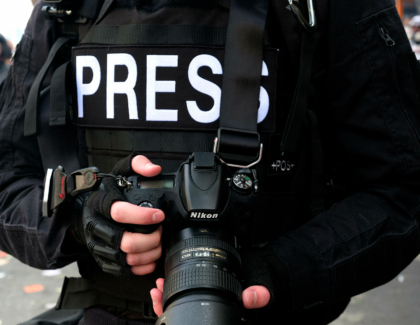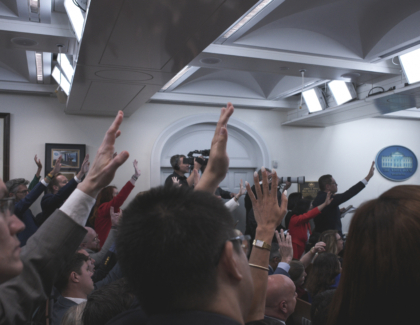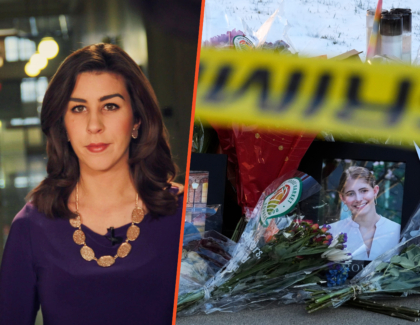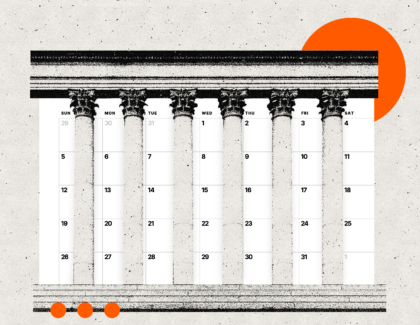Sign up for the daily CJR newsletter.
Jessica Kutz spends a lot of time explaining her beat to others. Kutz is the gender, climate, and sustainability reporter at The 19th, a nonprofit publication focused on gender. And to many people, she’s found, the link between gender and climate isn’t quickly apparent. Kutz has taken a wide-ranging approach to the beat, reporting on everything from gender-based healthcare amid climate disasters to the role women and LGBTQ+ people might play in the energy transition.
Covering Climate Now spoke recently with Kutz about stories that have exemplified her beat, the “egregious” gender-based oversights that permeate disaster planning and responses, and the opportunity for climate action to help rectify historical inequities. The conversation, with CCNow deputy director Andrew McCormick, has been edited for length and clarity. Check out all of Kutz’s coverage at The 19th here.
How do you explain your beat to people who aren’t journalists or don’t work in climate?
[Laughs] That is the question I dread. I’ve been on the beat for two years, and I’ve learned that a lot of people, certainly in the US, really don’t think about the intersection of gender and climate. People tend to think I’m reporting internationally. When they think of climate change impacting women, they think of women in other countries.
That’s an interesting bias.
This is starting to shift, but I think many Americans still see climate change as something elsewhere. So a lot of my beat is explaining this basic idea that people who are socioeconomically vulnerable, or who have a vulnerable place in society, are typically impacted most by climate change, and gender—this goes for women and LGBTQ+ people—is a huge part of that.
Women are disproportionately low-income, disproportionately single parents, and disproportionately they live in public housing. These three factors alone mean that when a natural disaster hits, for example, they’re among the populations that feel it most.
Women are also more likely to be caring for others in these situations, whether they’re pregnant or caretaking for the elderly or children. And of course, that’s not just true elsewhere globally but also here in the US.
Meanwhile, women don’t have equal representation in government, or in emergency planning. If the majority of people making decisions about evacuation shelters are men, for example, they’re unlikely to think about the needs of someone who’s breastfeeding. So, often, emergency shelters lack privacy or proper supplies to sterilize baby bottles. A shelter might have powdered formula, but then there’s no clean water to mix it with. I spoke with a researcher once who’d studied government disaster plans, and she found there was more guidance around what to do with pets than with infants.
We’re talking at a time when women’s rights and freedoms in the US are under attack. Has this reshaped how you formulate your beat?
It depends which women we’re talking about. For many women, especially women of color, injustices in terms of maternal health and reproductive rights were major concerns well before the repeal of Roe v. Wade.
We hear a lot about how climate change is affecting people’s decision to have children—whether people want to bring a child into the world, knowing about the climate crisis and worrying what could happen to them. But women of color and other marginalized groups have worried about whether they can raise their children in safe environments for a long time, given their communities’ disproportionate exposure to toxic pollution and various other forms of oppression. For these women, this new wave of attacks on their rights is new in a way, but it’s also not new, which is a nuance I’ve tried to point out in my reporting. Many women in our country haven’t had the same rights as other women.
Speaking more broadly, though, I’ve been thinking about situations that would lead someone to need an abortion. In the aftermath of storms, or any time there’s significant displacement, it becomes harder to stay on whatever method of birth control a woman uses. We know there are typically rises in sexual assault and domestic violence incidents at these times, too, which can lead to a rise in unplanned pregnancies. I haven’t reported this out, but I can just imagine, as more states enact bans, scenarios in which there’s a disaster, a woman needs to evacuate her home, and then everywhere she has to go there’s no access to this kind of healthcare. This would add to the already very difficult calculus people have to manage in these situations.
Were you reporting on this intersection of climate and gender before joining The 19th?
Prior to The 19th, I was at High Country News for four years. There, I was doing environmental reporting, including a lot of environmental justice reporting, and I do remember noticing a pattern of women tending to be more involved in grassroots environmental justice organizing. I don’t think I ever called that out in a story, or paid special attention to it, but it’s something I did repeatedly notice. Still, when I started at The 19th, I was definitely entering new territory.
So how did you go about building your beat?
It took some time. I looked at my colleagues’ coverage of the economy and politics and health, and how they were looking at all those subjects through a gender lens. Then I tried to think through the next step: Was there a climate angle to those stories? In many ways, that’s what I continue to do today. When there are gender-related stories in the news, I ask if there could be a climate aspect to the stories. And when there are climate-related stories in the news, I ask if there could be a gender aspect.
Over time, three key narratives emerged. Reproductive and maternal health is one. Another is politics and political identity—how gender, but especially motherhood, becomes an organizing force in environmental and climate politics. And the third, economics, both the socioeconomic vulnerability of women and LGBTQ+ people amid disasters and post-disaster recovery and the way in which the clean energy transition is coming to fruition, without funding for care work and with much of the job creation happening in male-dominated industries.
Is there a quintessential story you’ve done that revealed to you what this beat can look like?
I alluded to this story earlier, but in my first year at The 19th, I did a story about a doula collective in Louisiana called Birthmark. After Hurricane Laura, in 2020, and then Hurricane Ida, in 2021, they were traveling to evacuation centers and filling a role that emergency responders were not. They were doing intake for people with infants or who were breastfeeding, to ensure they had support and supplies—which is critical, because in stressful situations like a disaster, many women stop lactating. So Birthmark created and distributed these emergency feeding kits—which, in the time since then, they’ve also distributed in other states. The group has also trained hundreds of emergency first responders in safe infant feeding practices.
That story opened my eyes to the intersection of climate change and reproductive health, to this huge blind spot we have in society toward women as a group of people with specific needs. It’s an egregious oversight.
I’ll add that, because there aren’t many journalists working at this intersection, it’s sometimes easy to find that story no one else is reporting. I did a follow-up to that Louisiana doulas story, about midwives and the role they’ve played amid emergencies, because they’re capable of delivering babies without high-tech tools or electricity. Then, when the Maui wildfires hit last summer, I knew based on my previous reporting that reproductive [health] was likely being overlooked. I pulled that string, and sure enough there was a severe lack of maternity care for people displaced by the destruction. That became a solutions story, though, because I found a nonprofit, called Healthy Mothers Healthy Babies, which had deployed a mobile unit from Oahu that was delivering prenatal and postpartum care.
Looking forward, as more of the climate conversation shifts to solutions—and the need for justice and equity in those solutions—what gender stories are you following?
In many lower-income industries in the US, women form a significant percentage of the workforce. I did a story about ways in which the Inflation Reduction Act failed to account for the unique needs of women who would be involved in climate-related infrastructure construction. For example, there often isn’t childcare available in the very early and late hours during which a lot of construction work gets done. Even the workwear is predominantly designed for men, and women face a lot of safety issues when it comes to dressing properly on construction sites.
Now, I’m thinking about the American Climate Corps, a sweeping jobs-creation initiative announced last year by the Biden administration. It’s based on the Civilian Conservation Corps from the 1930s and ’40s, and that was all men. I’m wondering how this new initiative will recruit people and whether it will make an adequate effort to bring in women and LGBTQ+ people. Because what I’ve found in my reporting so far, and what I’ve seen in other reporting, is that a majority of the job creation related to efforts to reduce fossil fuel use and bolster clean energy is for positions held by men. Electricians are something like 98 percent men, for example, and we have a nationwide shortage of electricians—so there’s an opportunity right there to include others in the solution. But if we’re not looking at climate solutions through a gendered lens, if we don’t factor gender into this new world we’re creating, then we’ll just perpetuate inequalities in our society today.
Has America ever needed a media defender more than now? Help us by joining CJR today.





